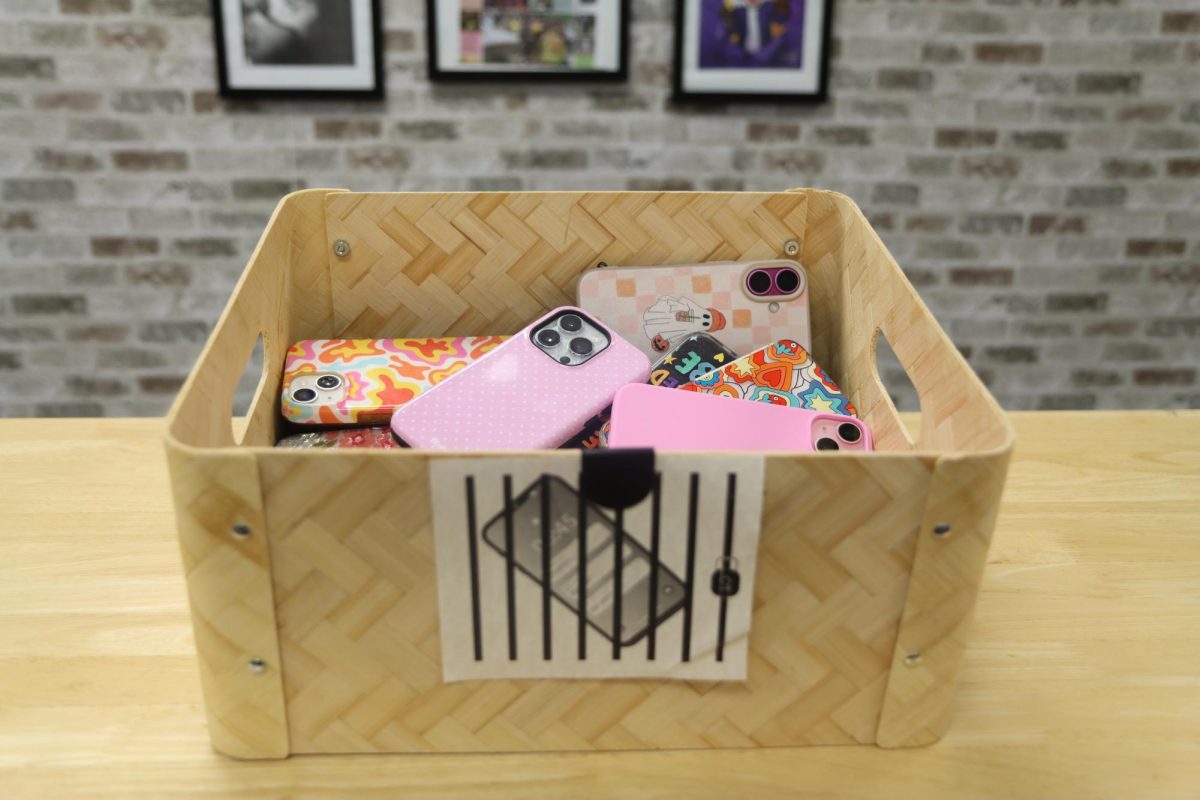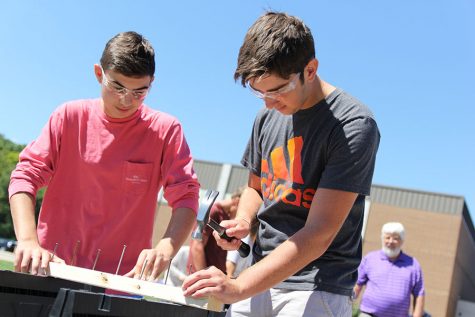A safe place to escape and regroup
The Restore Room: a new resource for health and wellness
A new therapeutic classroom has shifted the location of the AC lab into the distance learning lab in the library. Restore Room’s dimmed lights, couches so comfortable that students could sink into them, and a glowing fish tank, room 724 opened its doors to students, Aug. 28 to provide a more proactive escape rather than hiding in the bathroom.
Those overwhelming feelings are no stranger to teens. “Anxiety disorders affect 25.1% of children between 13 and 18 years old. Research shows that untreated children with anxiety disorders are at higher risk to perform poorly in school, miss out on important social experiences, and engage in substance abuse,” according to the Anxiety and Depression Association of America (ADAA).
“I can’t pay attention in class at all,” Sevauna Stageman, clinical anxiety sufferer, said. “I try to decipher and wonder about what my next step is”, Stagemen said. “The Restore Room will be better step before I just run to the nurse and take my medication or something. It’ll just be better than just going straight to the medication or just hiding in the bathroom and not doing my work.”
Stageman is not alone. One million American’s experience panic attack symptoms per month, according to Psychology Today. However, the adults of EHS are working to address the causes of those symptoms and provide tools to students.
Two years ago, RSD implemented The Response to Intervention (RTI) approach to teaching. The idea is that there are different types of learners in each classroom. The program consists of three “tiers” of intervention. As each tier builds up, a teacher will intervene with a struggling student and increase assistance. The goal of RTI is to maximize learning for all students.
The Restore Room is a third tier intervention for students who cannot–for whatever reason–function in that moment in time in the classroom.
“The interesting thing about the Restore Room is that it is a school within a school,” Jennifer Strauser, associate principal, said. “It is an opportunity for students who need to restore something to do so whether it is to restore an academic credit, a relationship with somebody else, their own sanity or their own piece of mind.There are many different reasons that a student would access the Restore Room.”
However, the Restore Room is not available for students to walk right in. It acts as the third tier in the Response to Intervention (RTI) program as a later resort for students in need. Students will go through the three tiers of RTI with counselors, teachers, and principals in order to guarantee them success in their learning.
“We have a Care Team. We get together the teachers with the student’s grade level principal and counselor–perhaps there is a social worker involved– and form an intervention plan,” Strauser said, “Okay, what is going on with this kid? What does this kid need? Then we devise a plan to meet the student’s needs.”
The goal of the Care Team is to figure out the least restrictive path for students in need and get them back into the typical classroom and on their feet.
“The Restore program is another resource for troubled kids,” Sandy Kearney, Guidance Department chair, said. “The criteria to get into the program is determined by a committee that includes Mrs. Strauser, a counselor and whoever else is appropriate.”
The Care Team may deem the Restore Room the best option for that student. Then the student can go to the Restore Room for however long necessary in order to restore themselves, a relationship or whatever they need.
The main goal of the room is to ensure that students are supported academically and emotionally in a safe environment. The room breaks all traditional aspects of a typical classroom with it’s decor and more comfortable seating. Denise McSwain, former Independent Learning Center teacher, will monitor the room.
“I am a certified math teacher, and I know math tends to be a struggle for a lot of kids,” McSwain said. “I have a lot of patience, and I want kids to be successful so I will do anything I can to help these kids succeed.”
Data suggests that students can benefit from the Restore Room.
In an NYU study conducted by Noelle Leonard, PhD, a group of researchers took a group of 128 students from two different private schools and observed their “coping skills, academic engagement, family involvement and expectations, mental health symptoms, and substance use.”
After the first phase of interviews with the students, the second phase of their experiment consisted of an anonymous internet survey for the students to complete.
The results of the experiment were substantial. “Nearly half (49%) of all students reported feeling a great deal of stress on a daily basis and 31 percent reported feeling somewhat stressed. Females reported significantly higher levels of stress than males (60% vs. 41%).
Grades, homework, and preparing for college were the greatest sources of stress for both genders. A substantial minority, 26 percent of participants, reported symptoms of depression at a clinically significant level.”
As school becomes more difficult for students ages 13-18, the work begins to pile on causing disruption within students’ lives in and out of school. Students Grace Eickel (12) and Lauren Jeffress (11) agree.
“I feel like lately within the last couple years, the stress on students has heightened. If school doesn’t come easy to them they are going to push themselves even harder and over the edge,” Eickel said. “If parents also add that stress on them, the pressure will just continue to build and eventually break them.”
The stress of school isn’t always contained there.
“The pressure of school affects me personally because I have always been the student that takes AP classes and hard classes because I’ve always wanted to do good in school,” Jeffress said. “Whenever I don’t understand something I get very overwhelmed and stressed out, then it starts to affect me at home. I’d be shutting myself off. I wouldn’t talk to my family. I would just work on getting my homework done. So, it just becomes very stressful.”
With school work and everyday life becoming too much to handle, struggling students could greatly benefit from the therapeutic room.
“The Restore Room can help us by giving people a place to go if they’re feeling too stressed out about anything and they could probably have somebody to talk to in there, or if they need to be alone they can go in there,” Cory Simmons (11) said. “I think that is a good thing.”
Strauser encourages anyone who is struggling to reach out to an adult at school. There is no need to suffer in silence.
Your donation will support the student journalists of Eureka High School - MO. Your contribution will allow us to purchase equipment and cover our annual website hosting costs.

Glascock is a news reporter for the EHS-hub. This is her second semester on staff. Her hobbies include travelling, writing, hanging out with friends, going...

This is Margherita's fifth semester on staff where he serves as an opinions writer for the EHS_hub. Marghertia enjoys discovering new music, traveling...

This is Jack's seventh semester on the Digital Media Production staff. In his free time, he likes to film and edit videos. If he could use one word to...















